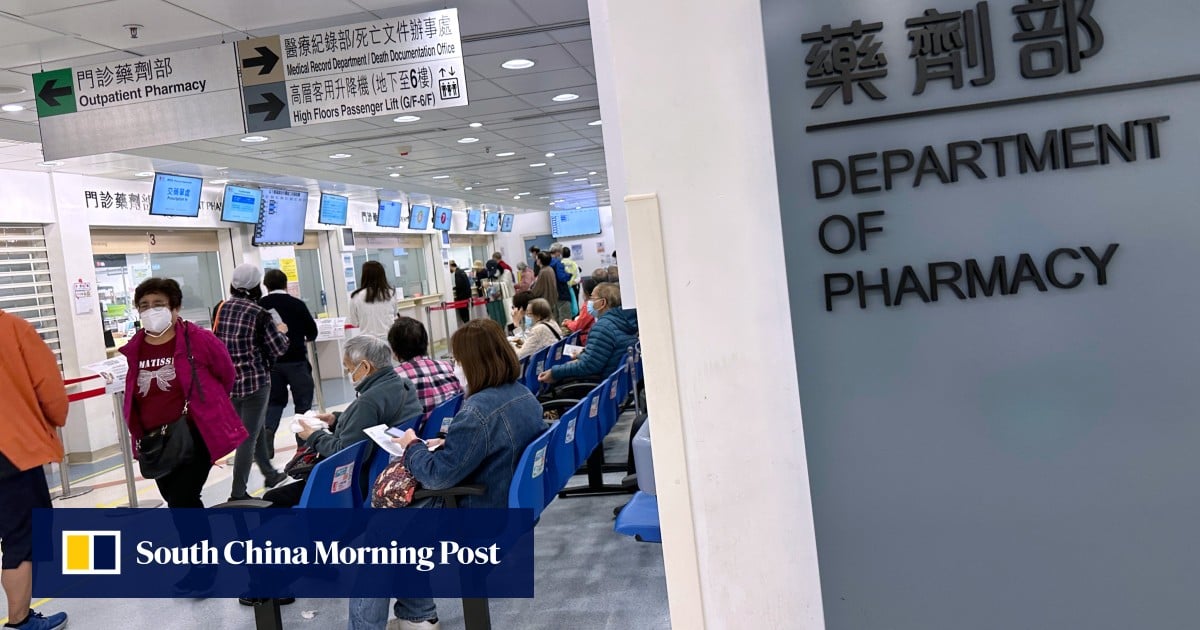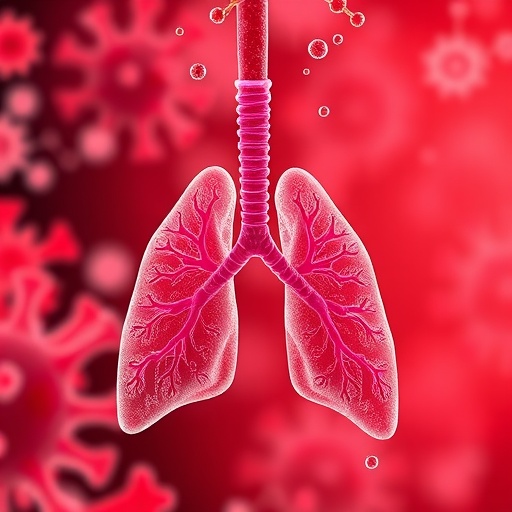Hongkongers to get greater access to cheaper medicines under specific list of drugs – South China Morning Post

Report on Hong Kong’s Primary Healthcare Initiative and its Alignment with Sustainable Development Goals
Introduction: Advancing SDG 3 through Primary Healthcare Reform
The Hong Kong government has announced a new healthcare initiative designed to enhance primary care and align with the United Nations Sustainable Development Goals (SDGs), particularly SDG 3: Good Health and Well-being. The programme aims to provide patients with access to affordable medicines, thereby strengthening the public healthcare system and promoting universal health coverage, a key target of SDG 3.
Programme Details and Implementation Timeline
The initiative, titled the Community Pharmacy Programme, is structured for a phased rollout to ensure effective implementation and alignment with public health objectives.
- Community Drug Formulary Launch: A list of subsidized essential medicines for primary healthcare, including those for managing chronic diseases, will be introduced in the second half of 2025.
- Community Pharmacy Programme Launch: The full programme is scheduled to commence in the fourth quarter of 2026.
- Pilot Districts: The initial rollout will be concentrated in four key districts: Eastern, Yau Tsim Mong, Sha Tin, and Yuen Long.
Core Components and Strategic Objectives
The initiative is built on two core components aimed at improving healthcare accessibility and affordability, directly contributing to the achievement of multiple SDGs.
- The Community Drug Formulary: This curated list of medications will allow patients in subsidized schemes, such as the Chronic Disease Co-Care Pilot Scheme, to purchase necessary drugs at significantly reduced prices. This directly supports the prevention and management of non-communicable diseases.
- Community Pharmacy Network: By enabling patients to access these medicines through participating family doctors and community pharmacies, the programme decentralizes healthcare delivery, easing the burden on the public hospital system and making primary care more accessible within communities.
Impact on Sustainable Development Goals
The programme’s design and objectives demonstrate a strong commitment to several key Sustainable Development Goals.
- SDG 3 (Good Health and Well-being): The initiative directly addresses Target 3.8 by advancing universal health coverage through access to quality and affordable essential medicines. By focusing on chronic disease management, it also contributes to Target 3.4, which aims to reduce premature mortality from non-communicable diseases.
- SDG 1 (No Poverty): By lowering the cost of essential medicines, the programme provides financial risk protection, helping to prevent households from falling into poverty due to high healthcare expenditures.
- SDG 10 (Reduced Inequalities): The subsidized pricing structure ensures that access to essential healthcare is not determined by economic status, thereby reducing health inequalities within the population.
- SDG 11 (Sustainable Cities and Communities): Strengthening primary healthcare services at the community level contributes to building more inclusive, safe, and resilient communities where residents have local access to essential health services.
Sustainable Development Goals (SDGs) Addressed
-
SDG 3: Good Health and Well-being
The article’s primary focus is on a new healthcare initiative in Hong Kong. It discusses the “Community Pharmacy Programme” and the “Community Drug Formulary,” which are designed to improve public health. The program aims to provide affordable medicines for managing chronic diseases and strengthening primary healthcare, directly aligning with the goal of ensuring healthy lives and promoting well-being for all at all ages.
-
SDG 10: Reduced Inequalities
By making essential medicines more affordable, the initiative addresses economic barriers to healthcare. The article states the program’s aim is to give “people access to more affordable primary healthcare drugs,” which helps reduce health inequalities based on economic status. This ensures that patients, regardless of their financial situation, can access necessary treatments, thereby promoting more equitable health outcomes.
Specific Targets Identified
SDG 3: Good Health and Well-being
-
Target 3.8: Achieve universal health coverage, including financial risk protection, access to quality essential health-care services and access to safe, effective, quality and affordable essential medicines and vaccines for all.
This target is central to the article. The initiative to allow patients to “buy medicines under a specific list of drugs at prices much lower than market rates” is a direct effort to provide “affordable essential medicines.” The program is part of a broader strategy to “promote the development of primary healthcare,” which contributes to achieving universal health coverage.
-
Target 3.4: By 2030, reduce by one-third premature mortality from non-communicable diseases through prevention and treatment and promote mental health and well-being.
The article explicitly mentions that the list of medicines will include those for “prevention and managing chronic diseases.” Furthermore, it notes that “Patients enrolled in the Chronic Disease Co-Care Pilot Scheme” will benefit from the program. By improving access to affordable medication for chronic conditions, the initiative directly supports the treatment and management of non-communicable diseases, which is a key component of this target.
SDG 10: Reduced Inequalities
-
Target 10.3: Ensure equal opportunity and reduce inequalities of outcome, including by eliminating discriminatory laws, policies and practices and promoting appropriate legislation, policies and action in this regard.
The Hong Kong government’s policy, as described in the article, is a specific action aimed at reducing inequalities in health outcomes. By subsidizing healthcare services and medicines, the policy ensures that access to essential treatment is not solely determined by a person’s ability to pay. This promotes more equal opportunities for maintaining good health among the population.
Indicators for Measuring Progress
While the article does not mention official SDG indicators, it implies several ways to measure the program’s success, which can serve as practical indicators:
- Number of patients enrolled in subsidized healthcare services: The article mentions that “Hong Kong patients enrolled in government subsidised healthcare services” and those in the “Chronic Disease Co-Care Pilot Scheme” will be eligible. Tracking the number of participants would be a direct measure of the program’s reach and its contribution to universal health coverage (Target 3.8).
- Price reduction of medicines: The core promise is that patients can buy medicines at “prices much lower than market rates.” An indicator would be the average percentage discount on drugs listed in the Community Drug Formulary compared to their standard market price. This measures the program’s effectiveness in providing financial risk protection (Target 3.8).
- Geographic coverage of the program: The article states the program will “first roll out in four districts – Eastern, Yau Tsim Mong, Sha Tin and Yuen Long.” The expansion of this program to other districts over time would be an indicator of progress towards ensuring equitable access for all citizens (Targets 3.8 and 10.3).
Summary Table of SDGs, Targets, and Indicators
| SDGs | Targets | Indicators (Implied from the article) |
|---|---|---|
| SDG 3: Good Health and Well-being | Target 3.8: Achieve universal health coverage, including access to affordable essential medicines. |
|
| SDG 3: Good Health and Well-being | Target 3.4: Reduce premature mortality from non-communicable diseases through prevention and treatment. |
|
| SDG 10: Reduced Inequalities | Target 10.3: Ensure equal opportunity and reduce inequalities of outcome. |
|
Source: scmp.com
What is Your Reaction?
 Like
0
Like
0
 Dislike
0
Dislike
0
 Love
0
Love
0
 Funny
0
Funny
0
 Angry
0
Angry
0
 Sad
0
Sad
0
 Wow
0
Wow
0



















































.jpg.webp?itok=0ZsAnae9#)















/countries/sri-lanka/photo-credit---dmc-sri-lanka.tmb-1200v.jpg?sfvrsn=dc298bcc_1#)








